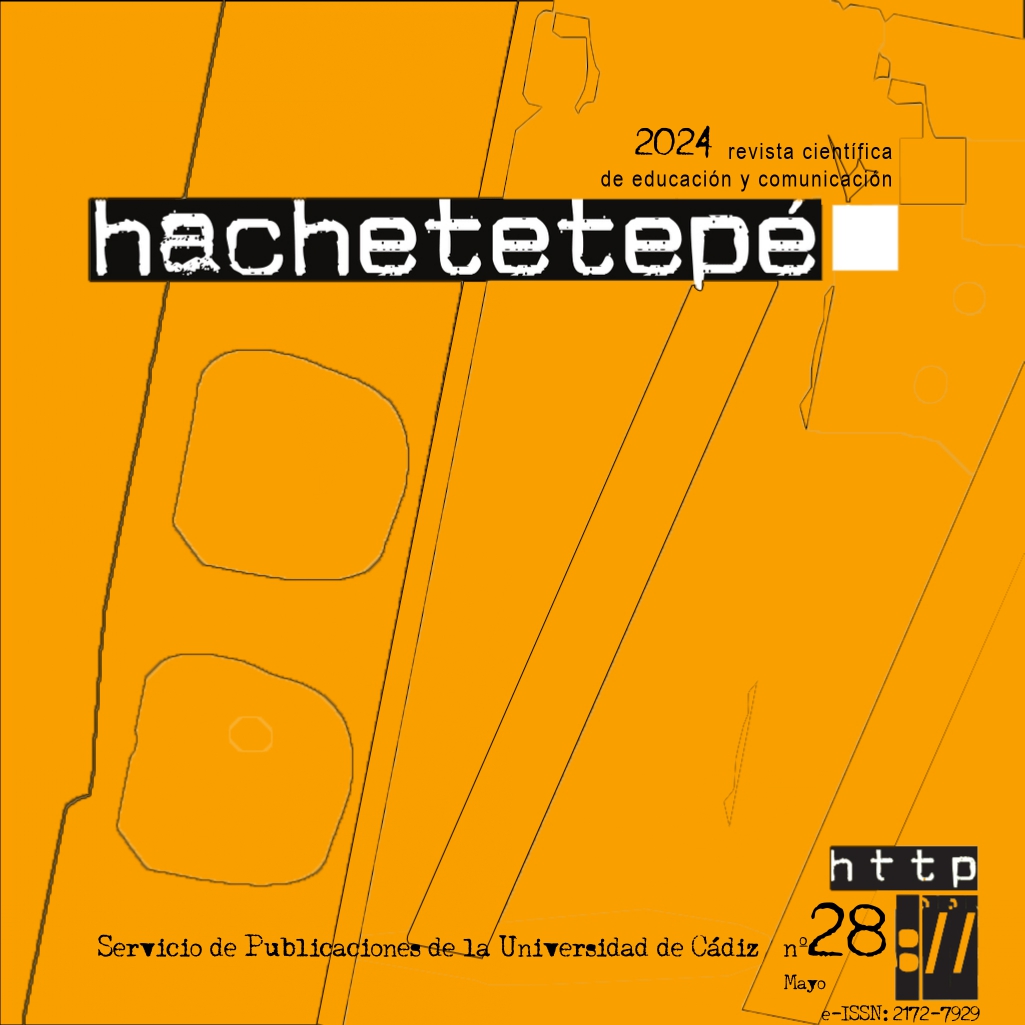Implementation of Artificial Intelligence at university to learn how to run advertising campaigns

Downloads
- PDF (Español (España)) 189
- EPUB (Español (España)) 27
- VISOR (Español (España))
- MÓVIL (Español (España))
- XML (Español (España)) 2
DOI
https://doi.org/10.25267/Hachetetepe.2024.i28.1106Info
Abstract
This research arises from the university teaching experience in the degree of Advertising. Its objective is to develop a series of resources with which to learn how to create advertising campaigns with the help of AI. The methodology takes the Aristotelian rhetorical process applied to advertising as a guide and reference, whose steps are: intellectio (delimitation of the subject), inventio(selection of the content), dispositio (arrangement of the components), elocutio (enunciation and eloquence) and actio (circulation). A description of each of them will be made and their contents will be detailed. Subsequently, a series of exercises will be proposed for their theoretical and practical learning. Finally, we will indicate how AI can be applied to carry out these tasks. The result is a series of pedagogical proposals that focus on programs such as ChatGPT and others that convert text into images as the main tools for advertising students to acquire the basic knowledge to carry out campaigns. Finally, the pros and cons of these AI in the university and professional advertising environment are discussed.Keywords
Downloads
How to Cite
License
Copyright (c) 2024 Álvaro Jiménez Sánchez

This work is licensed under a Creative Commons Attribution-NonCommercial-NoDerivatives 4.0 International License.
Those authors who have published with this journal, accept the following terms:
- They will retain their copyright and guarantee the journal the right to first publication of their work, which will simultaneously be subject to the Creative Commons Attribution License . They may be copied, used, disseminated, transmitted and publicly displayed, provided that the authorship, url, and magazine are cited, and are not used for commercial purposes. No derivative works are allowed.
- They may adopt other non-exclusive license agreements for the distribution of the published version of the work (e.g., deposit it in an institutional telematic archive or publish it in a monographic volume) provided that the initial publication in this journal is indicated.
- Disseminate your work through the Internet (e.g., in institutional telematic archives or on your website) once the manuscript is accepted, which may lead to interesting exchanges and increased citations of the published work. (See The effect of open access).
Hachetetepé. Scientific journal of education and communication does not charge a fee for the submission of manuscripts or for the publication of its articles.
References
Baladrón-Pazos, A. J., Correyero Ruiz, B., y Manchado Pérez, B. (2022). La formación universitaria sobre Publicidad y Relaciones Públicas en España tras 50 años de historia: qué y cómo enseñamos. El profesional de la información, 31(1), 1-20. https://doi.org/10.3145/epi.2022.ene.13
Bermejo-Berros, J. (2008). El receptor publicitario del siglo XXI en el marco de la interactividad: entre el consumer y el prosumer. En M. Pacheco Rueda (Ed.), La publicidad en el contexto digital (pp. 49-78). Comunicación Social Ediciones y Publicaciones.
Bermejo-Berros, J. (2020). Las nuevas estrategias persuasivas publicitarias por inducción de niveles de procesamiento psicológico. Revista Mediterránea De Comunicación, 11(2), 217–239. https://doi.org/10.14198/MEDCOM2020.11.2.5
Copeland, B. J., y Proudfoot, D. (2007). Artificial intelligence: History, foundations, and philosophical issues. In P. Thagard (Ed.), Philosophy of Psychology and Cognitive Science (pp. 429-482). North-Holland.
https://doi.org/10.1016/B978-044451540-7/50032-3
Godoy, A. C. (2008). Historia de la publicidad. Netbiblo.
Gómez-Calderón, B. (2004). De la intellectio a la elocutio: un modelo de análisis retórico para la columna personal. Revista Latina de comunicación social, (59), 8-12. https://doi.org/10.4185/RLCS-2004/02
Hernández-Guerrero, J. A., y García-Tejera, M. D. C. (2019). Aristóteles (384-322 a. C.). Biblioteca virtual Miguel de Cervantes. https://www.cervantesvirtual.com/portales/retorica_y_poetica/aristoteles/
Kietzmann, J., Paschen, J., yTreen, E. (2018). Artificial intelligence in advertising: How marketers can leverage artificial intelligence along the consumer journey. Journal of Advertising Research, 58(3), 263-267.
https://doi.org/10.2501/JAR-2018-035
Li, H. (2019). Special section introduction: Artificial intelligence and advertising. Journal of advertising, 48(4), 333-337. https://doi.org/10.1080/00913367.2019.1654947
McDonald, C., yScott, J. (2007). A brief history of advertising. In A. Tim y T. Gerard (Eds.), The Sage Handbook of Advertising (pp. 17-34). Sage. https://acortar.link/pJG5aS
Muthukrishnan, N., Maleki, F., Ovens, K., Reinhold, C., Forghani, B., y Forghani, R. (2020). Brief history of artificial intelligence. Neuroimaging Clinics, 30(4), 393-399. https://doi.org/10.1016/j.nic.2020.07.004
Pérez-Latre, F. J. (2017). Marcas humanas: fundamentos de la publicidad en el siglo XXI. Editorial UOC.
Pujante-Sánchez, J. D. (2011). Teoría del discurso retórico aplicada a los nuevos lenguajes. El complejo
predominio de la elocutio. Rétor, 1(2), 186-214. https://acortar.link/XLZsAV
Puntambekar, S. (2018). Design-based research (DBR). In F. Fischer, C. E. Hmelo-Silver, S. R. Goldman y P. Reimann (Eds.), International handbook of the learning sciences (pp. 383-392). Routledge.
Riccio, D. (2023). ChatGPT and AI are not going to replace creativity. Medium. https://acortar.link/kIPYT4
Rodgers, S. (2021). Themed issue introduction: Promises and perils of artificial intelligence and advertising.
Journal of Advertising, 50(1), 1-10. https://doi.org/10.1080/00913367.2020.1868233
Rodgers, W., y Nguyen, T. (2022). Advertising benefits from ethical artificial intelligence algorithmic purchase decision pathways. Journal of business ethics, 178(4), 1043-1061. https://doi.org/10.1007/s10551-022-05048-7
Sabanovic, S., Milojevic, S., y Kaur, J. (2012). John McCarthy [History]. IEEE Robotics & Automation Magazine, 19(4), 99-106. https://doi.org/10.1109/MRA.2012.2221259
Tungate, M. (2007). Adland: a global history of advertising. Kogan Page Publishers.
Vakratsas, D., y Wang, X. (2020). Artificial intelligence in advertising creativity. Journal of Advertising, 50(1), 39-51.






